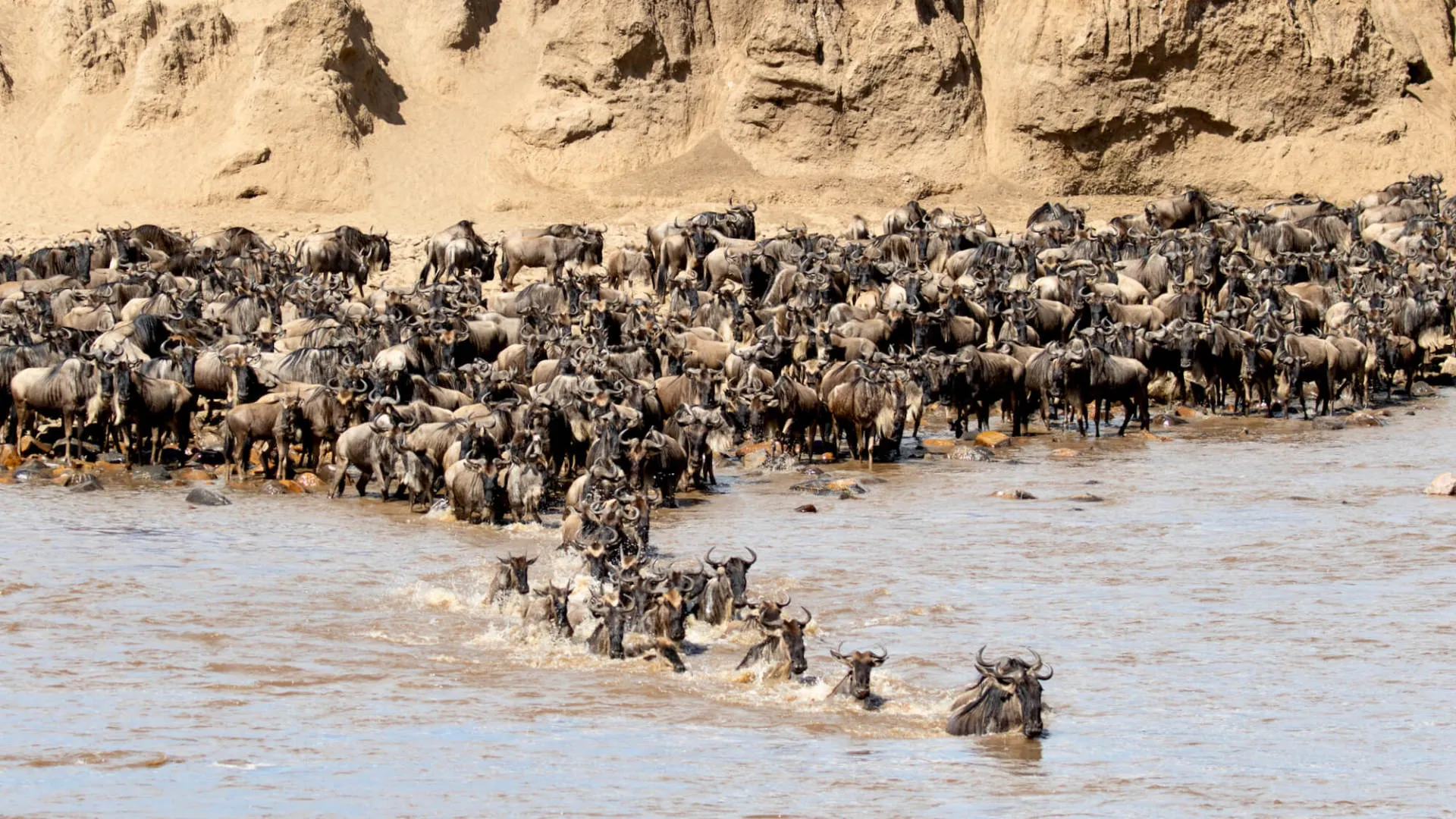Serengeti North is a pristine and remote section of Serengeti National Park, best known for hosting the dramatic Mara River crossings during the Great Migration. This region, bordering Kenya’s Maasai Mara Reserve, offers incredible wildlife encounters, with vast savannahs, woodlands, and rolling hills creating a diverse habitat for animals.
The Mara River serves as a lifeline for countless herbivores, but it also presents a deadly obstacle, as thousands of wildebeests and zebras risk their lives crossing the crocodile infested waters. Besides the migration spectacle, Serengeti North provides year round game viewing, featuring elephants, giraffes, lions, cheetahs, and the elusive leopards. The remote nature of this region ensures low visitor numbers, making it an excellent destination for exclusive and private safaris.
Wildebeest Migration in Serengeti North
Serengeti North plays a crucial role in the Great Migration. Between July and October, over 1.5 million wildebeests, zebras, and gazelles arrive at the Mara River, where they must make a treacherous crossing into Kenya’s Maasai Mara. Massive Nile crocodiles lurk beneath the waters, waiting to strike, while lions and hyenas patrol the riverbanks for easy kills.
The migration is unpredictable, with herds crossing multiple times depending on rainfall and grazing conditions. Visitors lucky enough to witness a crossing can expect heart pounding drama, as thousands of animals rush into the water, battling currents and predators to reach the other side.
As the short rains arrive in November, the herds begin moving south back towards Serengeti Central, completing the annual migration cycle.


